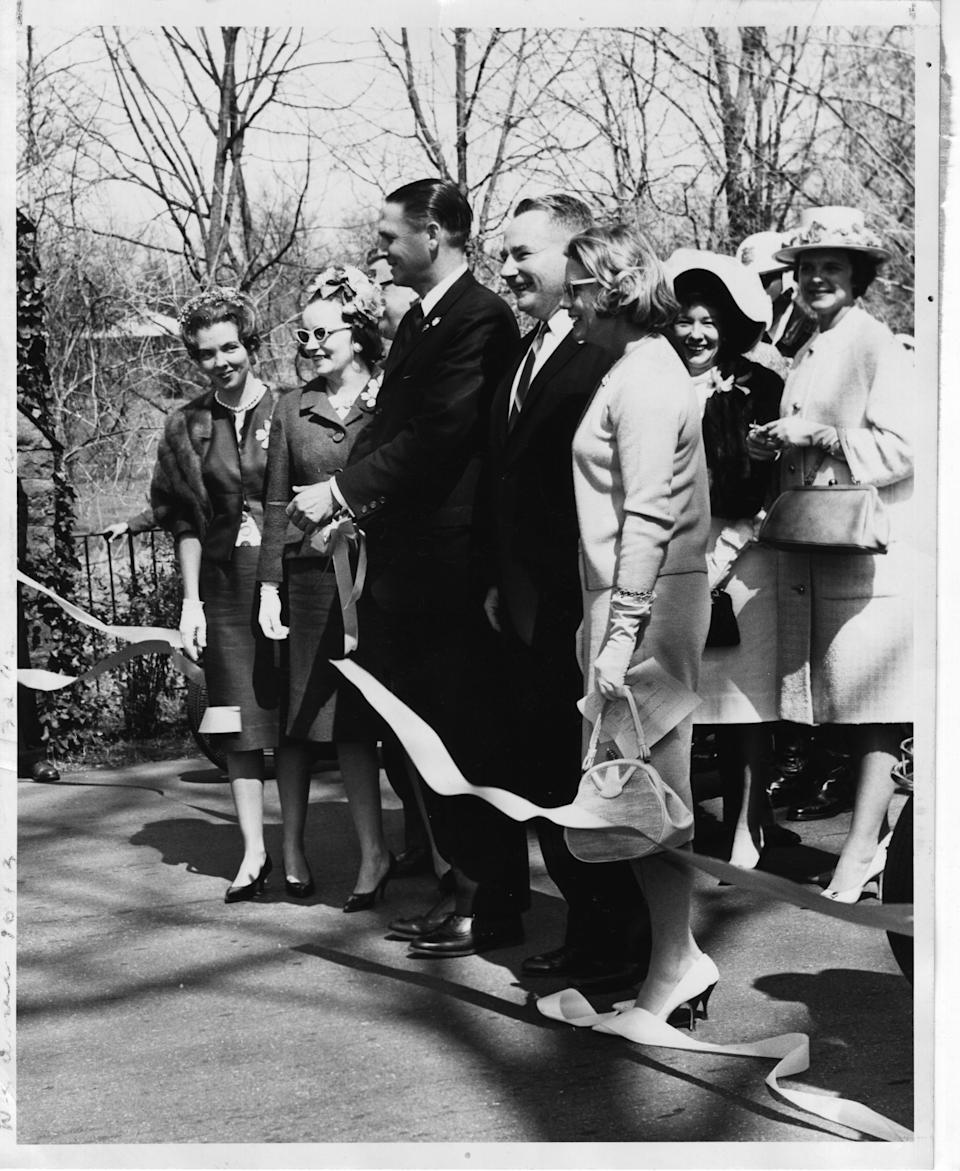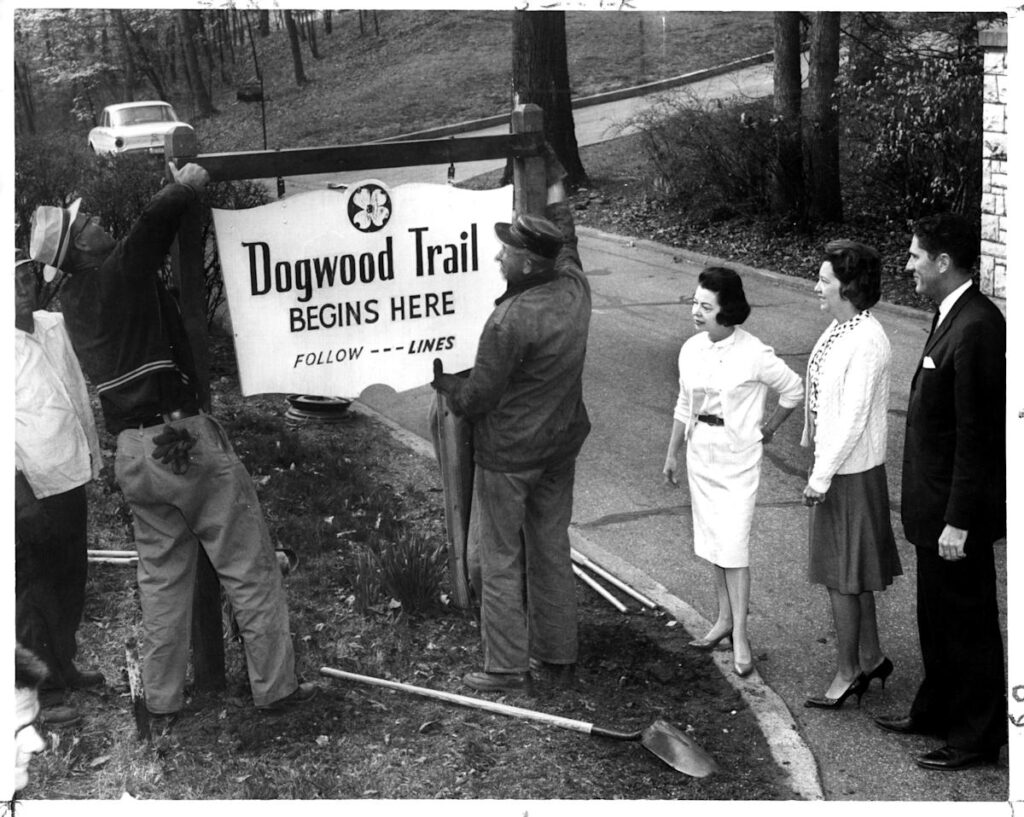Knoxville has historically had its haters. But this city has a way of turning insults into beauty, and Dogwood Arts is just one example.
You might have heard the story of the “Scruffy City” nickname, a moniker that developed as Knoxville prepared to host the 1982 World’s Fair. It began with the front page of The Wall Street Journal on Dec. 29, 1980.
In an article titled “What If You Gave A World’s Fair And Nobody Came?” Susan Harrigan questioned the decision to hold the fair in little old Knoxville.
“Nevertheless, with visions of international exotica dancing in their heads, leaders of this scruffy little city of 180,000 on the Tennessee River are churning out breathless press releases comparing Knoxville to such previous world’s fair hosts as Paris or New York,” Harrigan wrote.
Instead of rejecting the name, city residents claimed the title, and it even featured on a few T-shirts during what turned out to be a rather successful World’s Fair.
But long before that, haters were airing their grievances with Knoxville − and Knoxville was proving them wrong.
‘The ugliest city’ makes a case for its natural beauty
In 1947, journalist and writer John Gunther released his latest book, “Inside U.S.A.,” part of a series of nonfiction books based on Gunther’s travels. “Inside U.S.A.” featured descriptions of cities across America. His description of Knoxville was decidedly less than complementary.
“Knoxville is the ugliest city I ever saw in America, with the possible exception of some mill towns in New England. Its main street is called Gay Street; this seemed to me to be a misnomer,” Gunther wrote.
Knoxvillians were quick to share why Gunther’s assessment was false, and the Knoxville News Sentinel ran a few of their responses. “He must have a grudge against Knoxville. I have been in much worse towns. He must have been looking for night life. He can’t compare Knoxville with wet towns. Perhaps he was looking for a drink,” said Coy Tucker.
Tucker might have been right, as Gunther also complained, “Knoxville, an extremely puritanical town, serves no alcohol stronger than 3.6 per cent beer, and its more dignified taprooms close at 9:30 p.m.”
The insult remained on residents’ minds. Even two years later, the remark was still referenced in a News Sentinel column, and four years later in an advertisement. Eight years later, three Knoxville women were still thinking about the comment, too, only they decided to do something about it.
The first Dogwood Trails: ‘Unusually beautiful’
In 1955, Betsey Creekmore, Martha Ashe and Betsy Goodson, along with fellow members of the Knoxville Garden Club and a group of concerned citizens, were determined to make Knoxville more attractive − and to prove Gunther wrong, according to the Dogwood Arts website.
“One of the reasons (Martha Ashe) was involved is she saw it as a way of Knoxville beautifying itself,” said Victor Ashe, former Knoxville mayor and Martha Ashe’s son.
A March 1955 News Sentinel article references the Knox Beautiful Commission − of which Martha Ashe was also a part − as behind the trails, which were then “under study.”
“The idea is to have designated with signs the streets and roads in the city and county which are unusually beautiful with dogwood trees so that the public will be able to find them,” the News Sentinel reported. Residents were to suggest sites that would be reviewed for final selection by a committee of Garden Club members.
The first Dogwood Trail − sponsored by the Knox Beautiful Commission and the Council of Garden Clubs − was marked April 14, 1955, with 150 arrow signs made by Bob Gammon and his art class at Fulton High School, the News Sentinel reported that day.
The trail included parts of Westmoreland Heights, Sequoyah Hills, Timberlake and Maloney roads, East and West Bud Drive, Garden Avenue, Dogwood Lane, Kesterwood Drive and Asheville Highway near Chilhowee Elementary School. Thousands of visitors came to see the blooms that year, according to an April 26, 1955, News Sentinel article.
This year’s trails, which opened April 1, mark the event’s 70th year.
How the trails evolved into the Dogwood Arts Festival
In the trail’s fourth year, conservationist and longtime News Sentinel columnist Carson Brewer suggested it should grow into a bigger celebration in the style of the nearby Ramp Festival. “If Cosby can draw 30,000 people with an outcast onion, we should be able to pack in at least twice that many with a big dogwood wingding,” he wrote in a May 1959 column.
By August 1960, plans had been announced for Knoxville to host a dogwood festival. The inaugural event took place April 20-30, 1961. Ahead of the festival, the Knoxville Tourist Bureau received inquiries from “several hundred out-of-town persons,” the News Sentinel reported April 20, 1961.
About 30 different organizations were involved in programming for the festival, and hosted events including exhibits by the Boy Scouts and Girl Scouts, a book fair, a Civil War Centennial lecture and tour, a puppet show and a show at the Carousel Theater.
This year’s Dogwood Arts Festival is April 25-27.
Hayden Dunbar is the storyteller reporter. Email hayden.dunbar@knoxnews.com.
Support strong local journalism by subscribing at knoxnews.com/subscribe.
Two city crewmen put up the entrance marker for the Sequoyah Hills Dogwood Trail which opened today, April 5, 1963. Looking on are Mrs. John McKinnon, left, Sequoyah Night Trail chairman; Mrs. Leonard Nixon, Trail chairman, and Charles F. Herd, manager of the Chamber of Commerce.

Mayor John Duncan snipped the green and white streamers April 10, 1964 to open the Westmoreland Dogwood Trail. From left, Mrs. Robert H. Schriver, Jr., Mrs. Andrew Johnson, the mayor, George J. Nalley, Mrs. James V. Rose, Mrs. A.C. McKee and Mrs. John Testerman. John Duncan was Knoxville mayor 1959-1964.
Dogwood Trails chairwomen, from left, Mrs. A. B. Long, Jr., Mrs. Frank Creekmore and Mrs. Ralph Shell, Jr. April 17, 1962
John Gunther’s criticism of Knoxville – and praise for TVA – made the front page of The Knoxville News Sentinel on May 25, 1947.
The Knoxville News-Sentinel on May 25, 1945, quoted local residents reacting to writer John Gunther’s negative portrayal of Knoxville.
This article originally appeared on Knoxville News Sentinel: Dogwood Arts Festival was inspired by one man’s contempt for Knoxville
Read the full article here


